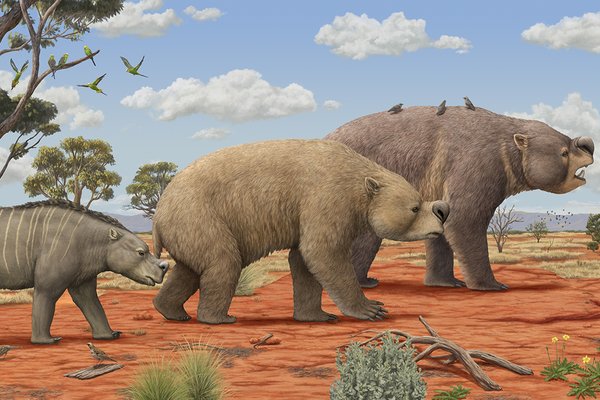Sydney over 100 million years ago
Imagine if Google Maps, your GPS, or Smartphone map app didn't just point you from A to B but took you back in time as you travelled through the suburbs of Sydney.
As an armchair traveller, key 1935 into your portable time machine and you may find yourself paging through one of the editions of the Australian Museum Magazine where Charles Anderson examines clay, rock and fossils, the ‘mute relics of the primeval world’, to build a tangible picture of how Sydney looked 100 million to 250 million years ago.
During the Mesozoic period, also known as the Age of Reptiles, a lagoon at Brookvale teemed with fish, crustaceans and insects with 30-centimetre wingspans.

© Australian Museum
The remains of a stegocephalian from the Triassic period, an ugly lizard with a large head and armour-plated back, was found in St Peters. At three metres in length, the complicated structure of the teeth led to this particular species being named Labyrinthodonts.

© Australian Museum
In the same period, the pressed layers of freshwater beds, vegetation and sandstone formed the Wianamatta Shales which have provided raw material for the modern-day manufacture of bricks and pottery from the suburbs of Chatswood and Ashfield. Meanwhile, deposits of compacted ash reveal the explosions of an active volcano along the beaches of Narrabeen.
The Sydney District a Hundred Million Years Ago is one of the articles which was published in the Australian Museum Magazine, Volume 5, No 12 in 1935. Recently digitised by the fantastic volunteers in our DigiVol project, this week we released volumes one to five online for the first time. Other stories include the spider-eating insects of Australia, how birds defend their homes, the life of explorer and naturalist Charles Sturt, and much more.
We'll keep the time machine revved up as we publish more volumes over the next few months.













